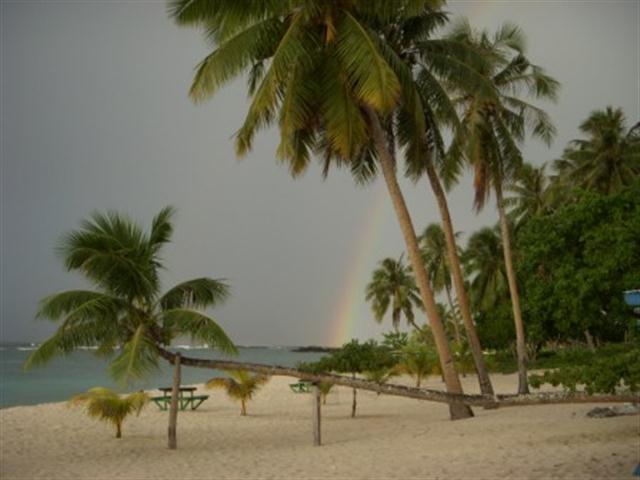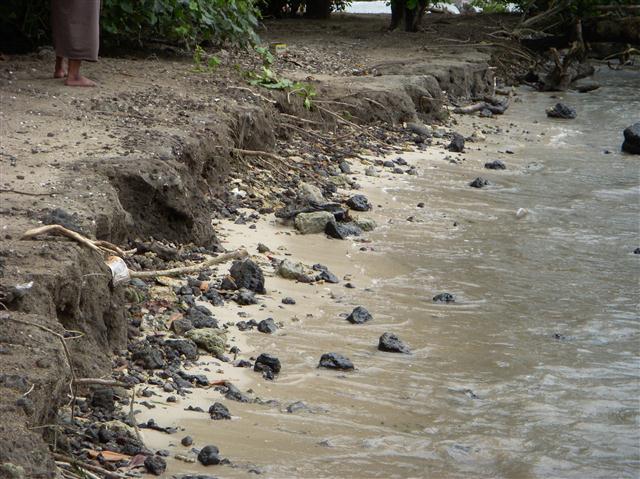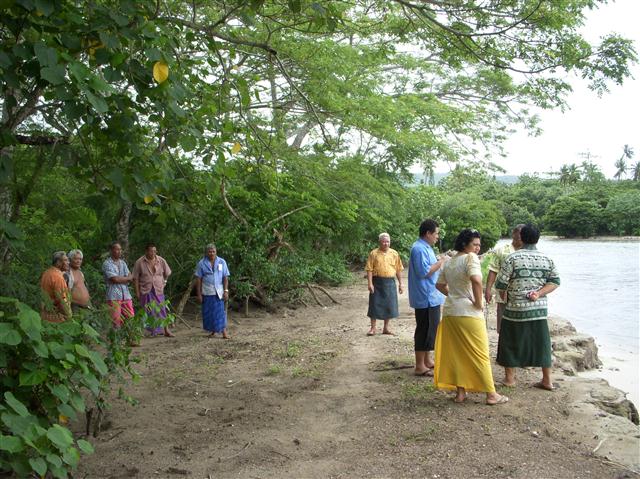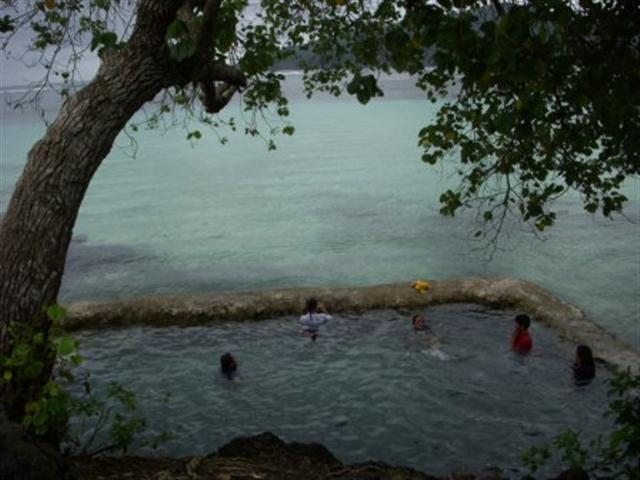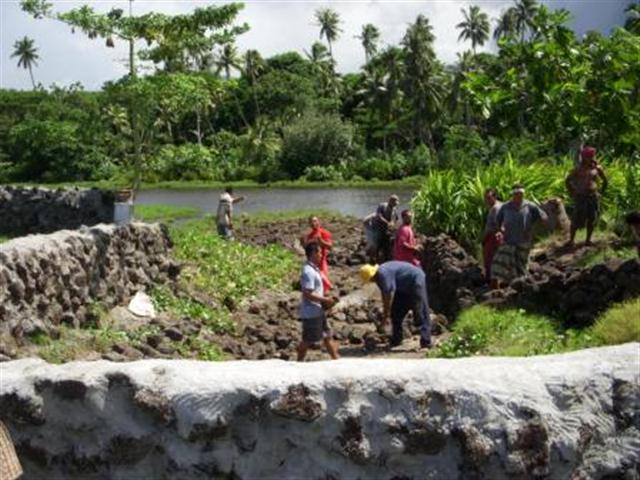Community-Based Adaptation: Samoa
Project Overview
As a small island developing state, Samoa's vulnerability to climate change is high. Homes, infrastructure and livelihoods in Samoa are overwhelmingly concentrated along an increasingly vulnerable coast. Climate change impacts in Samoa will include:
- Sea-level rise
- Coastal erosion
- Increasingly intense cyclones
- Coral bleaching
- Changes in rainfall patterns
- Potentially declining water availability
The Community-Based Adaptation portfolio in Samoa consists of six (6) projects total. They are:
- Adaptation to Flooding and Sea Level Rise - Fagamolo
- Adaptation to Flooding and Sea Level Rise - Safai Community
- Adaptation in Lelepa Village
- Protection and Conservation of Mangroves, Ecosystems, and Coral Reefs - Fasitootai
- Adaptation in Sato'alepai
- Adaptation to Flooding and Sea Level rise - Avao, Vaipouli, Salei'a
Community-Based Adaptation projects in Samoa focus on coastal ecosystems and the maintenance of their goods and services (erosion control, storm protection, water filtration) in the face of climate change. The CBA portfolio in Samoa will be guided by the Samoa CBA Country Programme Strategy.
All CBA projects involve non-governmental organizations (NGO) at the local and national levels. The UN Volunteers is a project partner in seven (7) out of the ten (10) CBA countries: Bolivia, Guatemala, Jamaica, Morocco, Niger, Namibia, and Samoa. In addition to the Adaptation & Volunteerism Specialist overseeing the seven (7) countries, an International UNV officer in Samoa is fully dedicated to the CBA projects at the local level. The partnership began in June 2009.
Australian AID co-finances the UNDP/GEF CBA projects in Samoa.
*Samoa is one of ten (10) countries implementing projects as part of UNDP's "Community-Based Adaptation" programme.
Project Details
Samoa, a small island developing state in the South West Pacific, faces significant climate change risks. These include sea level rise, increasingly intense storms, changing rainfall patterns, and impacts to ecosystems. As a semi-subsistence nation with approximately 70% of the population and infrastructure located in low-lying coastal areas, these impacts will pose significant risks to community livelihoods and to Samoa’s sustainable development. Awareness of climate change impacts has been particularly increased since the impact of tropical cyclones Ofa (1990) and Val (1991), which caused damage costing approximately four times Samoa’s gross domestic product.
Samoa’s climate is tropical and marked by distinct wet and warm (November-April) and dry and cool (May-October) seasons. Temperatures are typically tropical (ranging from 24-32° C daily) and generally uniform throughout the year with little seasonal variation. The rainfall and humidity are usually high, with the average annual rainfall about 3,000mm. Approximately 66% of precipitation occurs during the wet season.
Samoa and other Pacific Island Countries have observed increasing average temperatures (0.3-0.8°C) during the 20th century, with a mean increase in Samoa of 0.59°C. The maximum and minimum temperature has also increased by 0.67°C and 0.18°C respectively, while precipitation has decreased by 49.28mm over the same period. Climate change projections suggest that this pattern will continue and accelerate, with increasingly frequent drought events, and increasingly intense rainfall events. Recent studies of cyclones in and around Samoa’s region have found that there has been an increase in the frequency of tropical depressions, gale wind forces, and tropical cyclones during the cyclone season (December to February).
In addition to these observed changes, climate change scenarios for Samoa – prepared for the NAPA, the National Communications to the UNFCCC, and from the IPCC fourth assessment report – project the following:
- Reduced overall annual rainfall
- Higher occurrences of high-intensity rainfall events
- Increased average temperature
- Rising sea-levels, and
- Increased tropical cyclone frequency and intensity.
These projected climate changes are expected to pose significant and interlinked risks to communities and ecosystems across Samoa. For example, droughts will increase forest fire risks, and in turn increase erosion risks. Erosion from increasingly erratic rainfall poses significant risks to mangrove ecosystems and to near-shore corals. Damage to coastal ecosystems, from sedimentation as well as coral bleaching, increases vulnerability to cyclones, large waves, and storm surges. Cyclones, large waves and storm surges have the potential to damage and salinize community water resources and agricultural land.
Community-Based Adaptation projects will address these climate change risks though improved natural resource management, with the aim of increasing the resilience of ecosystems and ecosystem services in the face of climate change. Projects in Samoa address the following two objectives:
- Enhance resilience of natural resources and livelihoods sensitive to climate change impacts through improving community adaptive capacities to sustainably manage natural resources;
- Through lessons learned from community projects, provide support to national adaptation policies and strategies, to reduce community vulnerabilities to the long-term effects of climate change and variability.
Key Results and Outputs
The following impact indicators will support these objectives, and will be assessed at the portfolio level, for the CBA program in Samoa:
- Percentage change in natural resource-dependant population with access to alternative or supplementary livelihood options (UNDP TA6 Adaptation indicator 2.4),
- Number of measures deployed as part of sustainable resource management activities (UNDP TA6 Adaptation indicator 4.2).
The indicators will be measured through CBA community projects, and aggregate to serve as a measure of the success of the overall CBA program in Samoa.
Reports and Publications
CBA Inception Workshop, July 2009 - CBA in Samoa (Leotele Leaupepe)
Brochures, Posters, Communications Products
Community-Based Adaptation: Climate Change in Action brochure (2009)
Community-Based Adaptation: Climate Change in Action brochure (Jan. 2010)
Community-Based Adaptation to Climate Change Brochure (July 2010)
News article
CBA Samoa - Fasitootai - 100 Volunteers mangrove planting news article (Dec. 2010)
CBA Samoa - Avao/Vaipouli/Salei'a - News Article (Jan. 2011)
ProDocs
PIFs
Project Brief / Fact Sheet
Multimedia
CBA - Reducing Risks in Samoa (UNV Video)
TOFIGA O PILI AAU - Samoa CBA Project (Pt. 2)
This is a shortened version of an original 25-minute video created through a participatory process at the sites of UNDP's Community-Based Adaptation projects in Samoa. It features the initiatives of vulnerable communities as they act to mitigate the impacts of climate chaneg on their environment, livelihoods and infrastructure.
TOFIGA O PILI AAU - Samoa CBA Project (Pt. 1)
This is a shortened version of an original 25-minute video created through a participatory process at the sites of UNDP's Community-Based Adaptation projects in Samoa. It features the initiatives of vulnerable communities as they act to mitigate the impacts of climate chaneg on their environment, livelihoods and infrastructure.
Monitoring and Evaluation
Monitoring and evaluation for community-based adaptation is a new field, and the CBA project is piloting innovative approaches to evaluating the success of loitative data collected in community discussions surrounding the exercise.
UNDP has developed a Users Guide to the VRA (Espanol) (Francais) as a tool to assist practitioners to conceptualize and execute VRA measurements in the context of CBA projects.
The SGP Impact Assessment System (IAS)
The CBA, being a project of the GEF Strategic Priority on Adaptation, aims to increase the resilience of ecosystems and communities to the impacts of climate change, generating global environmental benefits, and increasing their resilience in the face of climate change impacts. To this end, the CBA projects use the SGP's impact assessment system for monitoring achievements in GEF focal areas (focusing primarily on biodiversity and sustainable land management).
The IAS is composed of a number of quantitative indicators which track biophysical ecosystem indicators, as well as policy impact, capacity development and awareness-building.
UNDP Climate Change Adaptation Indicator Framework
CBA projects also track quantitative indicators from UNDP's adaptation indicator framework, corresponding to the thematic area on natural resources management. More information on UNDP's indicator framework can be found on the UNDP climate change adaptation monitoring and evaluation website.
*This description applies to all projects implemented through UNDP's Community-Based Adaptation programme. Specific details on this project's M&E will be included here as they become available. *
